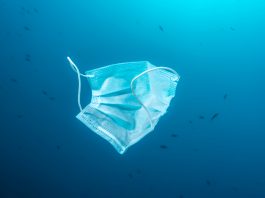A group of scientists have established a model that keeps track of the route and destination of plastic debris from land-based sources in the Mediterranean Sea.
This innovative model indicates that plastic debris can be monitored across the Mediterranean, from beaches and surface waters to seafloors. As well as this, it estimates that approximately 3,760 metric tons of plastics are floating in the Mediterranean at present.
Every year since the 1950s, global plastic production has been rising, with a staggering 386 million tons of plastic being produced in 2019. A big proportion of this waste makes its way into the oceans and seas, and it has been approximated that 250,000 tons of plastic debris are floating around oceans all over the world.
Plastic debris hotspot in the Mediterranean
Novel research that has been published in Frontiers in Marine Science indicates that a staggering amount of micro and macroplastic debris is presently floating in the Mediterranean Sea.
The Mediterranean Sea is regarded as a hot spot for plastic pollution. It is theorised that this is a result of its heavily populated coastlines, fishing, shipping and tourism, as well as a restricted outflow of surface water to the Atlantic. This hotspot is of concern because the Mediterranean is rich in biodiversity and plastic pollution threatens the conservation of marine ecosystems.
Plastic pollution impacts all levels of marine biodiversity, with micro and macroplastic particles observed at the sea surface, beaches, the seafloor, and within the bodies of big and small marine animals. It has also been reported that humans ingest plastic through seafood consumption.
Modelling plastic pollution
The new model, created by a team from the Hellenic Centre for Marine Research in Greece, performed a simulation between 2010 to 2017, following plastics from land-based sources like rivers and coastal cities, whilst considering significant dispersion processes, including sinking, vertical/horizontal mixing, wind, and currents. It also detected possible accumulation patterns of micro and macroplastics in the surface layer, water column, seafloor, and on beaches.
This showed that the total annual plastics load going into the Mediterranean is around 17,600 tons and that 3,760 tons are currently floating in the Mediterranean. Of the total, 84% ends up on beaches and the remaining 16% ends up in the water column or the seafloor.
“Simulations of plastic distribution in marine environments are currently characterised by a large degree of uncertainty. Experimental data on several processes that affect the fate of plastics, such as sinking, ingestion by marine organisms and fragmentation into smaller pieces, are still quite limited,” explained lead author Dr Kostas Tsiaras.
“Our model showed a reasonable skill in reproducing the observed distributions of plastics in the marine environment and thus can be used to assess the current status of plastic pollution in the Mediterranean and evaluate the impact of future cleaning actions and management plans.
“Microplastics are less abundant in the sea surface due to their faster sinking from the attachment of heavier marine organisms (biofouling) and accumulate deeper in the water column and seafloor. On the other hand, macroplastics, such as plastic bags and styrofoam may float around for longer time periods and travel long distances from their sources.”
Mitigating plastic pollution
“The model outputs can be used to identify ecologically (bird and cetacean habitats) or commercially (aquaculture and fisheries) important areas that are potentially threatened by plastic pollution. This is important for the design of ecosystem-based management plans and policies for the mitigation of plastic pollution, which is often a trans-boundary environmental problem, as floating plastics may travel long distances from their sources,” added Tsiaras.
The social, political, and cultural diversity of countries along the coastline of the Mediterranean Sea means that the execution of a unified marine ecosystem management policy is challenging. However, models like these can assist in overcoming this problem.
“The use of predictive models, like the one presented here, that can connect observed plastic concentrations with their sources, is critical for the designation of successful management plans.”









